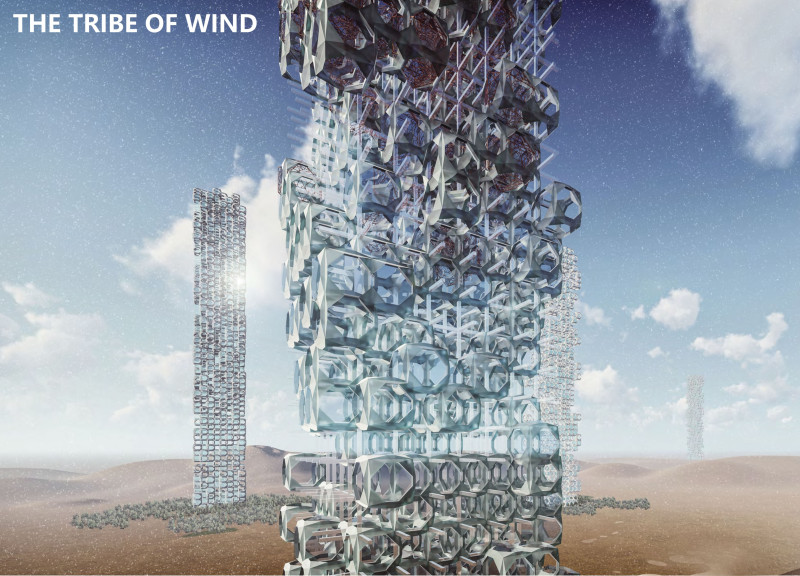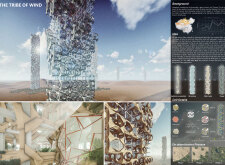5 key facts about this project
The project combines advanced engineering techniques with sustainable practices. The towers are designed to filter sand particles from the wind, improving local air quality and providing a protective barrier for the surrounding community. By integrating micro-gardens within the architecture, the project enhances biodiversity and helps restore the local ecosystem, converting the arid landscape into a productive environment.
Sustainable Material Use and Design Innovation
A significant characteristic of "The Tribe of Wind" is its focus on materiality and efficiency. The project employs porous glass for exterior layers, allowing sunlight to penetrate while reducing exposure to sand. Concrete provides structural integrity, while natural fibers are incorporated to augment the design with biophilic elements, promoting a connection to the environment. The usage of recycled materials further emphasizes the project’s commitment to sustainability.
Moreover, the architecture is adaptive, responding to the natural conditions of the site. The buildings are engineered to optimize airflow, creating a comfortable microclimate for residents. This adaptive capability is a distinctive aspect compared to conventional structures, offering a dynamic solution for environmental challenges.
Community-Centric Architectural Design
In addition to its environmental functionalities, "The Tribe of Wind" serves as a community hub. The towers are designed to accommodate educational spaces, workshops, and communal areas, fostering social interaction and community resilience. This emphasis on community-building sets the project apart from typical residential developments that often prioritize aesthetics over social function.
The integration of traditional cultural motifs in the architectural design enhances a sense of identity and place. Local materials and design principles inform the overall aesthetic, establishing a connection to the region’s heritage while providing modern amenities.
To gain a comprehensive understanding of "The Tribe of Wind," interested readers are encouraged to explore architectural plans, sections, designs, and ideas that underpin this project. These elements offer deeper insights into its spatial organization, functionality, and innovative solutions for addressing environmental challenges in arid regions.























